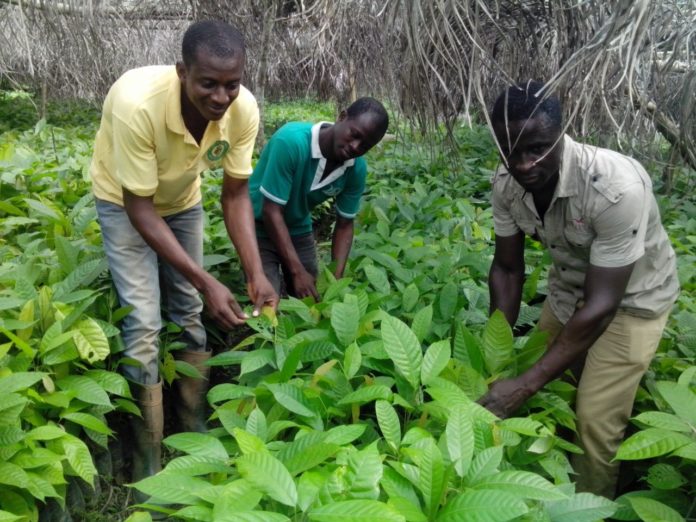Multi-disciplinary orientation, socially responsible research and location-specific innovation are key to enhancing rural livelihoods Producing more with less resources is the way forward |
Agriculture and allied sector, being the primary source of livelihood for about 58 per cent of India’s population, accounted for 18.8 per cent of the country’s overall Gross Value Added (GVA) during FY22.
The advancement of technology, emergence of sunrise areas and the risks posed by climate change in agriculture have necessitated greater extension support to farmers for efficient integration with agricultural value chains (AVCs) to maximise farm incomes and adoption of risk-mitigating, climate smart agricultural practices.
The recent focus of the government on farmer producer organisations (FPOs), building agriculture infrastructure, enhancing agri-exports and encouraging agri-tech start-ups are initiatives in the right direction for creating an enabling policy environment. Accomplishment of these goals, however, requires scaling up of our existing agricultural education and research systems, realigning them with the emerging needs of the sector. Although it has been empirically shown that higher investment in agricultural research leads to improved agricultural growth, food security and alleviation of poverty, it is a matter of concern that India’s research intensity ratio — measured as public agricultural R&D spending as a share of agricultural output — continues to be relatively low. It has remained around 0.4 per cent of the agriculture GDP since 2001.
The present-day challenges of food production, considering its impact on the environment, call for producing more with less resources (land and water) and adapting to climate change and greater weather variability, while balancing the nutrition and energy needs. Therefore, a paradigm shift is needed with a focus on the three pillars, namely, productivity, sustainability and resilience to equip farmers with a seamless integration of traditional practices with scientific innovations for sustainable intensification. In other words, innovations and approaches in agriculture need to be adapted to local conditions, considering the agro-ecological factors and cultural preferences, before making them available for wider adoption by farmers.
With one of the largest agricultural research systems in the world — the National Agricultural Research and Education System (NARES) — India has 27,500 agricultural scientists, more than one lakh support staff and several institutions (agricultural universities, research institutes and Krishi Vigyan Kendras) under the supervision of ICAR.
The National Agricultural Higher Education Project (NAHEP), launched by ICAR in 2017, with the objective of enhancing competitiveness while designing market-oriented course curriculum, plans to develop 117 pilot courses to be offered by various agirculture universities. Efforts are also on to align the agricultural education and research system with the National Education Policy (NEP) 2020 for forging industry-market linkages with educational institutions, to make the educated youth market-ready for enterprise and employment.
The National Academy of Agricultural Sciences (NAAS) has accordingly formulated the New National Agricultural Education Policy for Reshaping India (Policy Paper 99, September 2021) with a view to redefining and transforming the agricultural education and extension system, based on the five pillars of access, equity, quality, affordability and accountability.
The way forward
The need of the hour is to re-examine the suitability of the current curriculum of courses in various agricultural disciplines and suggest ways to revamp it comprehensively, aligning with the NEP and incorporating provisions for integrating state/location-specific requirements as well as the needs and aspirations of all stakeholders concerned, embarking on a multi-disciplinary orientation involving researchers, academicians, farmers, industry, market and relevant institutions.
In this context, an assessment of the human resource requirement of the fast transforming, knowledge-intensive agriculture sector assumes significance for meaningfully tweaking the existing curricula. High order mechanisation, automation, resource-conserving and productivity enhancing technologies, precision agriculture, Artificial Intelligence (AI), blockchain technologies, Big Data analytics, IoT and ICT are the new order of the day. Second, there is a need to encourage socially responsible research with meaningful outcomes to suit the changing rural economic landscape, aligning with the Sustainable Development Goals (SDGs).
This calls for an enhanced investment on agricultural education and R&D by way of: (i) repurposing budgetary allocation for agriculture and re-prioritisation of R&D portfolio of the government, to attain the committed level of investing at least 1-2 per cent of agricultural GVA on agricultural R&D; (ii) institutional support for outcome based research studies in relevant areas under chair professor scheme; (iii) mobilising CSR support; (iv) forging more international collaborations; and (v) encouraging private investment.
Third, location-specific innovation systems should be supported to attract rural entrepreneurial youth in setting up agri-tech start-ups for provision of farm advisory services and cross-industry technological and digital solutions propping efficient AVCs. This would also be a potential source of employment for educated rural youth, besides being an effective means of enhancing the economic viability of farming. Mani is Chief General Manager, Nagesh is Deputy General Manager, NABARD. Views are personal








